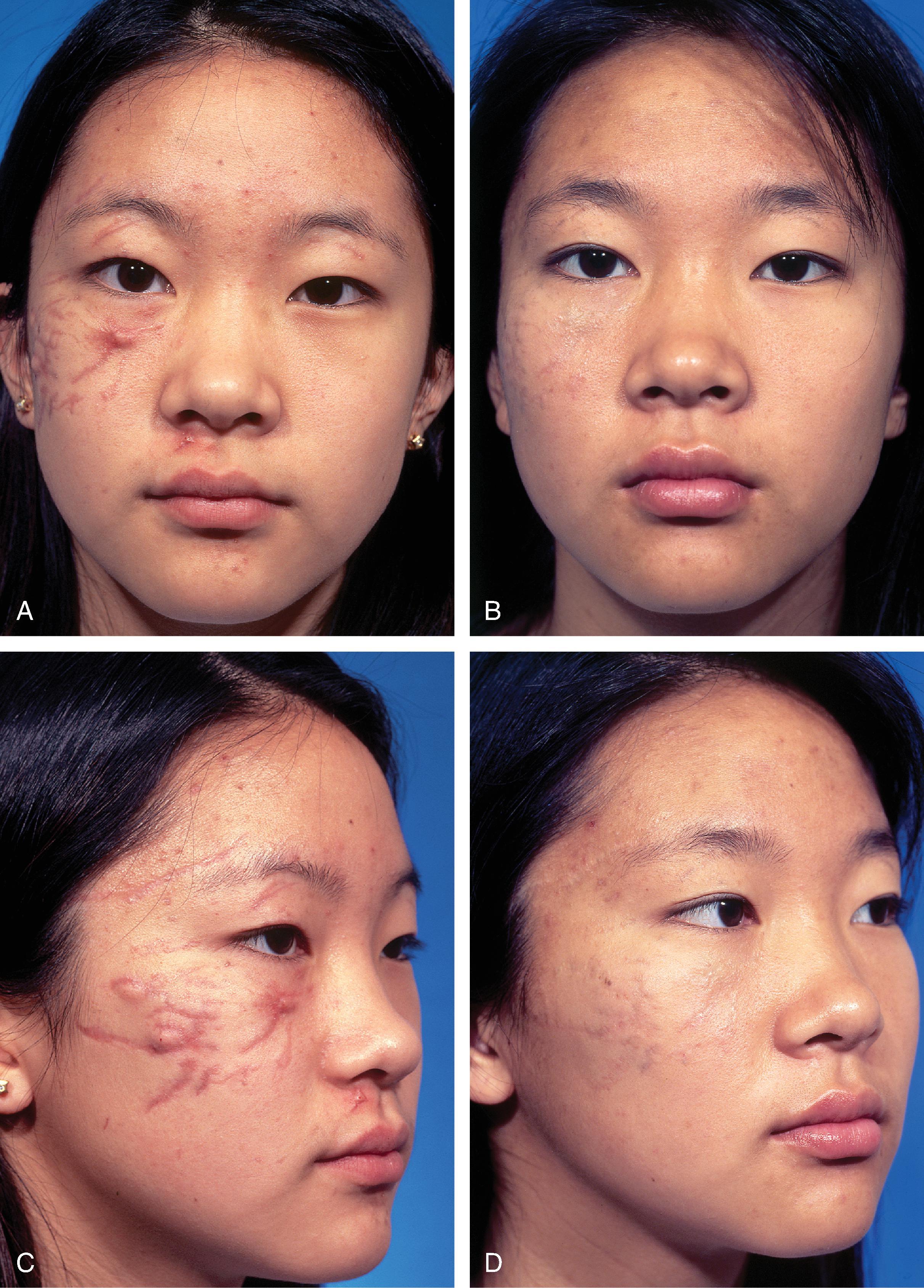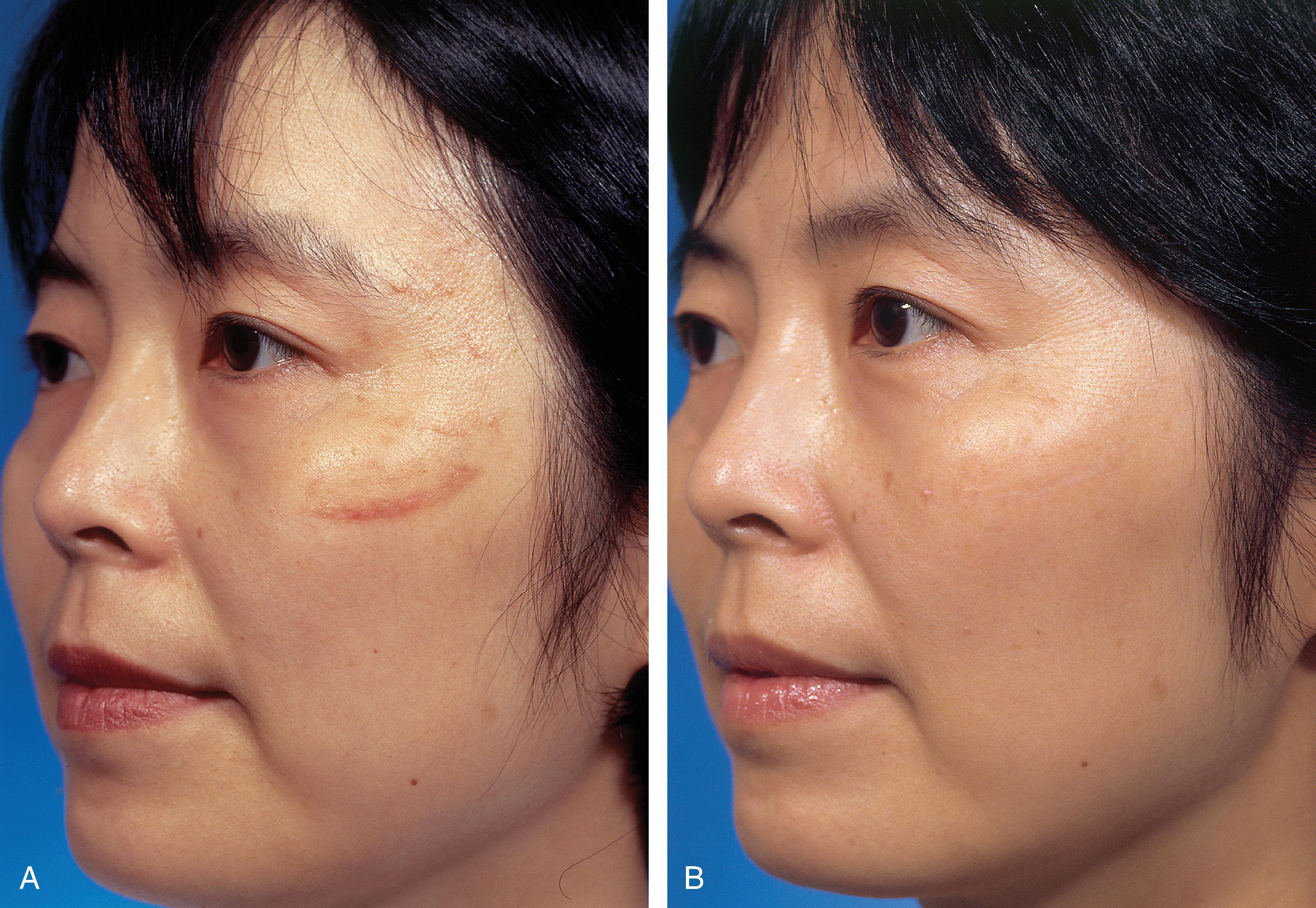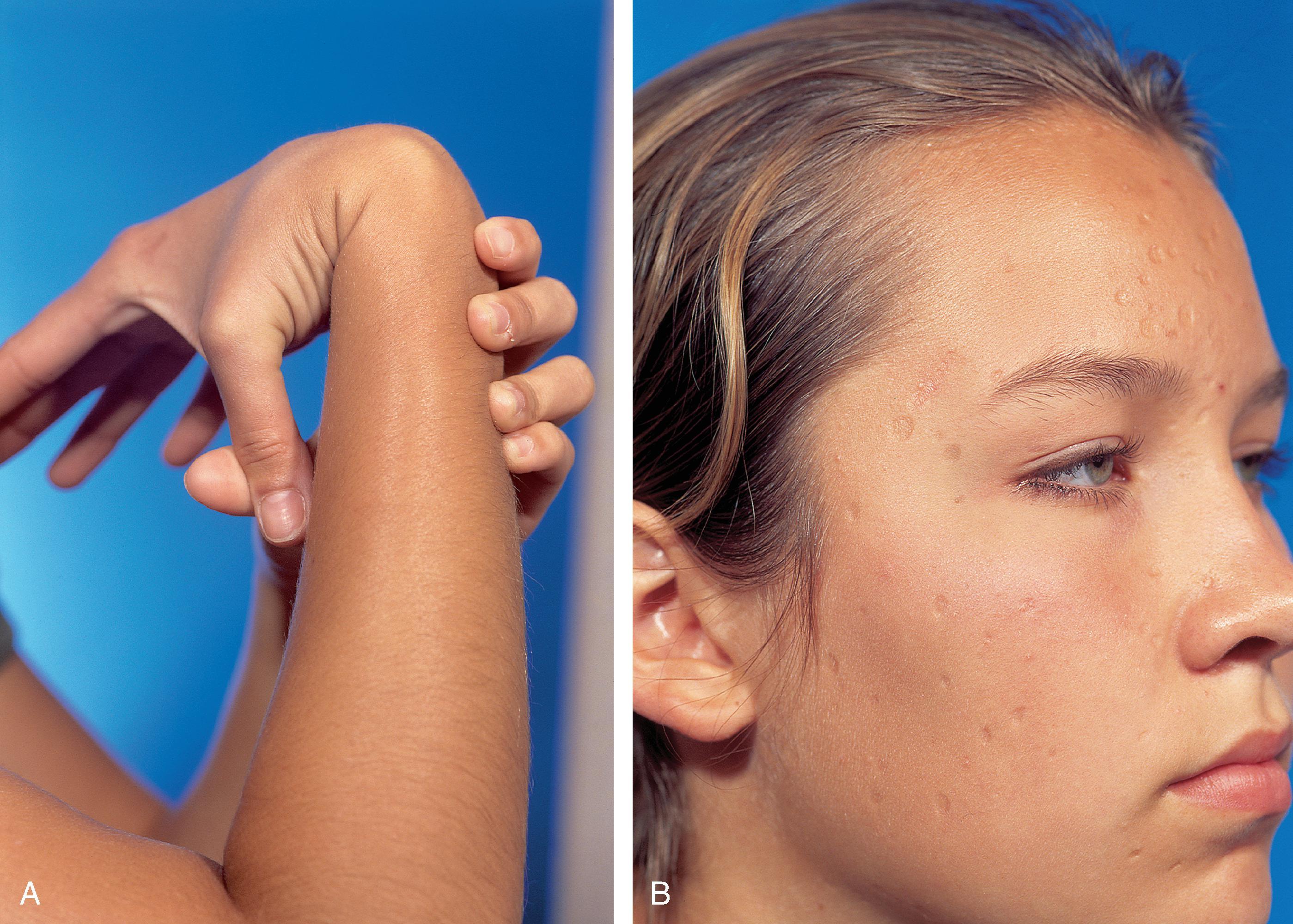Physical Address
304 North Cardinal St.
Dorchester Center, MA 02124
The definition of a scar in Webster’s dictionary is a “mark left after injured tissue has healed.” Any full-thickness injury of the skin, planned or unplanned, will leave a scar. It is the body’s way of repairing itself. Although scars are vital in the reparative process, they can be aesthetically and functionally disruptive. Scars can interfere with normal motion and be disfiguring, decreasing a person’s quality of life. Each person deals with a scar differently depending on the inciting event that caused the scar. In some countries, very deforming scars can be a sign of nobility or bravery. To another individual, however, the same scar can be emotionally devastating. If the scar was caused by an altercation or disease process, it is a reminder of the vulnerability and fragility of the body.
Factors that influence scar formation and appearance after wound healing depend on the initial injury, location of the wound, and local cellular and humoral responses. Wound healing is a natural phenomenon that progresses through many states before complete healing. The stages of wound healing include initial coagulation, an inflammatory phase with re-epithelialization, a fibroblastic phase, and a maturation phase with the deposition of collagen and glycoproteins. The process of healing is complete after approximately 1 year at which time the scar will reach 80% of the original tissue tensile strength. Wound healing is discussed in detail in Chapter 4 .
Unsightly scars may develop for a number of reasons. Inappropriate placement of incisions or poorly designed local flaps may contribute to a less than desirable result. Other factors include the location and size of the wound. Certain surgical techniques used for repairing wounds may adversely affect scar formation. These include failure to properly approximate and evert wound edges, failure to perform sufficient undermining of tissue, failure to close the deep layers of a wound, and failure to remove cutaneous sutures in a timely manner. One of the most important factors influencing scar formation is the degree of wound closure tension. Whenever possible, wounds should be repaired with the least degree of tension. Incisions adjacent to mobile structures are more likely to result in an apparent scar. For example, scars of the lip and of the skin overlying the body of the mandible are more likely to widen or become hypertrophied because of the frequent motion of the skin in these areas. Incisions and lacerations of thick skin are more likely to produce noticeable scars than of thin skin. On the face, thicker skin is located on the chin, caudal nose, and forehead. Thus incisions in these areas are more likely to develop hypertrophic raised scars that can widen and have prolonged erythema compared with other regions of the face.
The circumstances of wounding are a factor in scar formation. Planned surgical wounds heal better than contaminated wounds. Skin wounds from traumatic injuries or disease usually heal with more scarring. In traumatic and surgically created wounds, greater tissue loss is associated with greater scarring. When lacerations or skin avulsions are ragged but parallel to relaxed skin tension lines (RSTLs), the irregular borders can be excised and the wound closed in a straight line. If the wound is perpendicular to RSTLs, however, then it may be prudent to close the wound while preserving the ragged border to help create an irregular scar. Thermal injuries and wounds containing foreign material are likely to heal with hypertrophy.
Patient factors are important in predicting the outcome of healing wounds. Individuals with hyperelastic joints have more elastin in the dermis of the skin and are likely to form widened scars even when wound closure tension is minimal or absent. Other factors include race, skin type, age, and general health of the patient. Scars in fair skin patients tend to remain pink for an extended interval. Darker skinned individuals (Fitzpatrick Type III or greater) often form hyperpigmented scars and are more likely to form keloid scars. Children and younger adults are more likely to heal with thick firm scars than older patients are. For this reason, improving scars in children is particularly challenging and it is often prudent to postpone scar revisions until after puberty.
Optimizing a patient’s nutrition and immune system is beneficial to wound healing. Collagen synthesis requires vitamins A and C and iron. Epithelialization requires zinc. Certain chronic diseases affect wound healing. Patients requiring insulin for diabetes, steroids for collagen vascular disease, or antimetabolites for cancer have an increased risk for poor wound healing and wound infection. Individuals with atrophic dermatitis or psoriasis tend to have staphylococcal colonization of their skin and as a consequence have a higher risk for postoperative wound infections. Wounds created in areas previously treated with 50 Gy or greater of irradiation are more likely to heal slowly or not at all. This is because of irradiation-induced changes of the skin, which include fibrosis and obliteration of the subdermal vasculature, atrophy of the skin and subcutaneous fat, and loss of cutaneous appendages. Nicotine can increase the risk for skin necrosis after wounding. This is because of the effects of nicotine on the vasculature of the skin, which include endothelial thickening and damage to small vessels. It is also related to the vasoconstrictive properties of nicotine.
A scar cannot be removed or eliminated, but in certain instances it may be improved. One of the goals of plastic surgery is to create scars only when necessary. Ideally, scars should be imperceptible and not impair function, especially around the mouth, eyes, and nose. Scars should lie in aesthetic borders or in RSTLs where wound closure can be performed with the least amount of wound closure tension. The ideal scar should be flat and level with the surrounding skin without depressions, bulges, or step-offs that create shadows in certain lighting. Scars should be narrow and should not cause distortion of adjacent tissue. Ideal scars should display the same color and texture as surrounding skin. Scars should be parallel to RSTLs or lie in a natural skin crease.
To achieve an ideal scar when performing flap surgery, the surgeon must have a thorough understanding of skin anatomy and physiology, perform careful analysis of the defect, be knowledgeable about alternative reconstruction methods, employ skillful and meticulous soft tissue handling techniques, and understand the patient’s expectations. The surgeon must also be aware of the limitations of each surgical procedure. When alternatives are available, the surgeon should avoid creating long, straight, unbroken incisions, which tend to make scars more visible. ,
The patient should be informed at the time of scar revision that more than one procedure may be required, with appropriate intervals between each stage. A common question of patients is, “How much can my scars be improved?” Always err on the conservative side when responding to this question and never promise complete improvement. Scars cannot be eliminated and in reality the surgeon is exchanging one scar for another. If the scar is similar in color to surrounding tissues; narrow; flat; and well positioned in RSTLs, aesthetic boundaries, or the midline, it would be imprudent to recommend scar revision.
Traditional teaching dictates that scar revisions should not be performed until 6 to 12 months after the initial surgery or wounding. This is to allow for scar maturation. Wounds have only 20% of their final strength by the third week of wound healing. Scars continue to change and improve during the remodeling phase of wound healing. This includes collagen remodeling and collagen fiber reorientation for up to 18 months. This process can be longer in children. Young patients may have an exaggerated healing reaction with increased scar erythema and hypertrophy, so scar revisions in children should be delayed as long as possible ( Fig. 27.1 ). Immature scars tend to be erythematous, which will usually fade over time ( Fig. 27.2 ). The scar’s appearance will also improve as it matures. Nevertheless, early scar revision may be necessary if scars are grossly deforming, such as those that are perpendicular to RSTLs, cross or deform facial aesthetic regions or units, or have traumatically implanted foreign material. In such circumstances, it is recommended to delay scar revision for only 2 or 3 months after wounding to allow the deposition of the dermal scar, which can serve as a wound base. Dermabrasion of scars may be performed 6 to 9 weeks after initial wounding. The first 2 months of wound healing manifest a high fibroblast activity and collagen remodeling; therefore dermabrasion is more effective at this time. ,


An understanding of the mechanical properties of facial skin and the principles of facial aesthetic regions and units is necessary to perform skillful scar revision surgery. Skin anatomy is discussed in depth in Chapter 1 . Facial aesthetic regions and units are described in Chapter 6 . A history of how the patient has healed from previous injuries is important. Patients that can bend their thumb back to the volar surface of their forearm ( Fig. 27.3 ) or touch their tongues to their noses (Gorlyn sign) are more flexible than the average person. These individuals possess more elastin within their dermis and are more likely to spread their scars.

Scars should be classified according to etiology (acne, varicella, disease process, trauma, tattoos, surgical), and type (keloid or hypertrophic, depressed, widened, elevated, etc.). The nature of scars should be described as to size, shape, contour, structural distortion, and color. Scars may often be improved if they are widened, are perpendicular to RSTLs, or interrupt an aesthetic boundary of the face. Webbed, depressed, atrophic, hypertrophic, and keloid scars can usually be improved with revision surgery. Scars that display a trap-door deformity and that do not improve with time or with subcutaneous injections of triamcinolone should be considered for revision surgery. Scars adjacent to but not lying in a favorable site may be relocated to a preferable location. Long unbroken lines not within RSTLs can frequently be improved with scar revision. Scars causing distortion of facial features or impairing the function of structures should be revised.
Patients should discontinue the use of tobacco products, nonsteroidal medications, and vitamin E before scar revision. Scar revision should not be performed in an area of active infection. Active acne should be controlled with antibiotics, topical retinoic acid, and kartolytics. If the patient has been on Accutane within the past 18 months, dermabrasion or laser resurfacing should be postponed. Accutane reduces the cellular activity of cutaneous adnexal appendages, which is necessary for re-epithelialization of superficial surface wounds. Before dermabrasion or laser surgery, the skin may be conditioned by treating it with a tretinoin. Tretinoin has been shown to inhibit dermal collagenase, preventing the breakdown of collagen. Patients should be instructed to avoid excessive sunlight exposure to a scar before and for 3 months after revision surgery.
Selection of the most appropriate surgical technique for scar revision depends on the condition and location of the scar. Treatment options may include elliptical excision of the scar or irregularization, epithelial abrasion, or filler implantation. The simplest method is often preferred, but more than one procedure may be required.
Become a Clinical Tree membership for Full access and enjoy Unlimited articles
If you are a member. Log in here